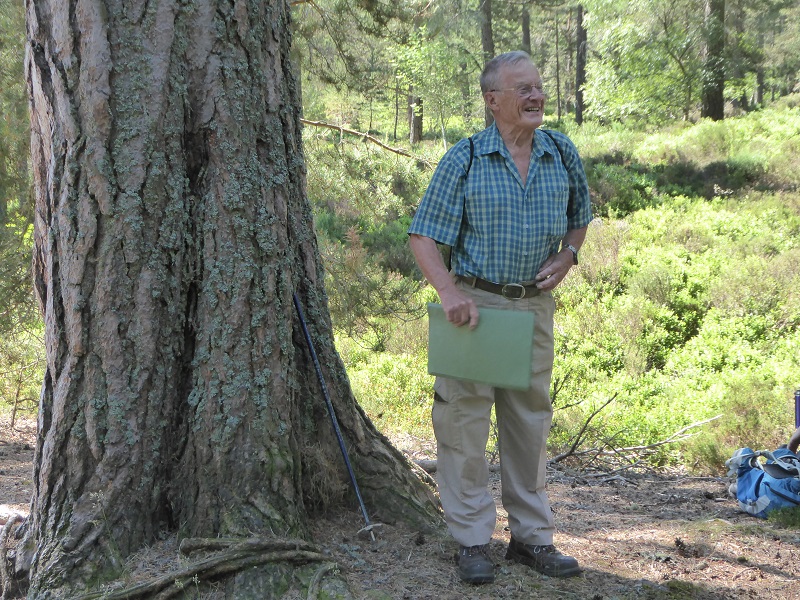
Twenty five years ago a group of dynamic people interested in land-use in Scotland undertook a study tour of Norway and the subsequent report written by Andy Wightman, now a Green MSP (see here), inspired many people to get involved in developing alternatives to blanket blocks of Sitka, degraded grouse moors and deer “forests”. Last week I went on the first of Reforesting Scotland’s Land Revival Study tours (see here), which visited a number of sites on the western side of the Cairngorms National Park, to take a look at some of what has been happening since. While a long-term member of Reforesting Scotland – I find their journal an inspiring read about grassroots initiatives – I had never done anything with them. I joined the tour because I believe the most important role of our National Parks should be to develop alternative ways of managing the land and for this to happen they need to find ways to replicate what are sometimes small initiatives at the landscape scale. This post considers the Anagach Community woods because they illustrate that, if only we stopped damaging the natural environment, nature has a huge capacity to regenerate – a great example of rewilding at a small scale.
The Anagach woods were originally planted in 1766, with seed from the Abernethy Caledonian Forest, on an area of glacial moraine with eskers and kettle holes. This was not much good for farming and sandwiched between the new town of Grantown on Spey, which the Grant family had created the year before, and the River Spey. The local community in Grantown bought the woods in 2002 from Seafield estates and we were shown the woods by Basil Dunlop who is chair of Anagach Community Woods (see here) having previously managed them as Head Forester for Seafield Estates.
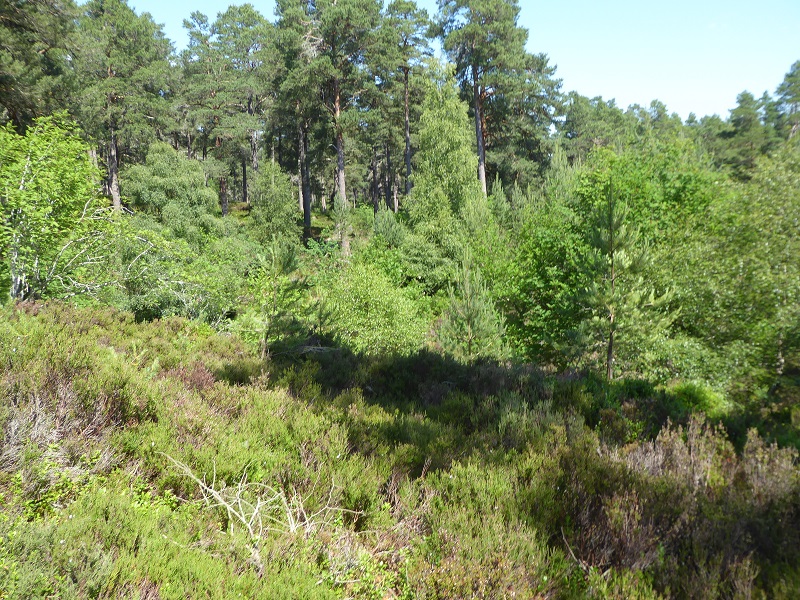
Much of what Basil told us can be found in really informative history (see here). While not technically Caledonian Forest, the woods are too recent for that, the trees are genetically from Caledonian Forest stock and contain all its characteristic plants and animals, from twin flower to capercaillie, apart from Red Deer.
Part of the explanation for this biological richness lies in the ways the woods have been managed historically. While trees were felled from the woods by the estate, in most places instead of replanting trees were allowed to re-seed naturally. Cheap and effective and far more akin to the models of continuous cover forest management to be found in Europe than the cut, fell and plant model used in most of the UK.
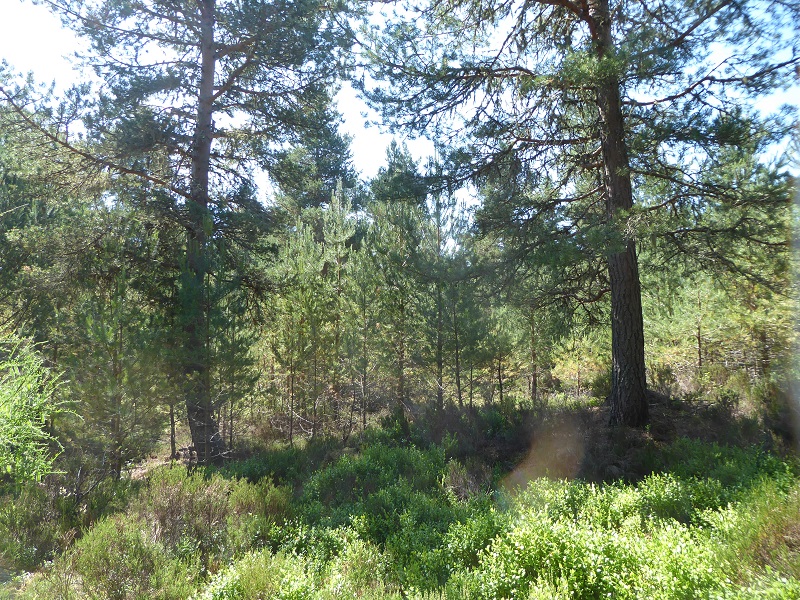
When the Community bought the woods there was a debate about whether areas where coupes of trees had been felled should be re-planted or whether nature needed a helping hand, for example by clearing away ground vegetation. Basil Dunlop argued strongly against this and showed us the evidence on the ground (see photo above). The regeneration took a bit of time but provides a cautionary tale for those people who are impatient with nature and who wish to plant trees to speed up natural regeneration.
Anagach woods are isolated from open moorland and, because of this, unlike other native woods, not browsed by Red Deer. Someone from the tour asked Basil about roe deer and I was intrigued to learn the Community undertake no culling. Perhaps the local farmers do the job? They have not stopped the natural regeneration. The Anagach Woods have also stopped felling trees – although they are not against removal of some fallen timber from the woods – and as a consequence the woods are now being left to manage themselves.
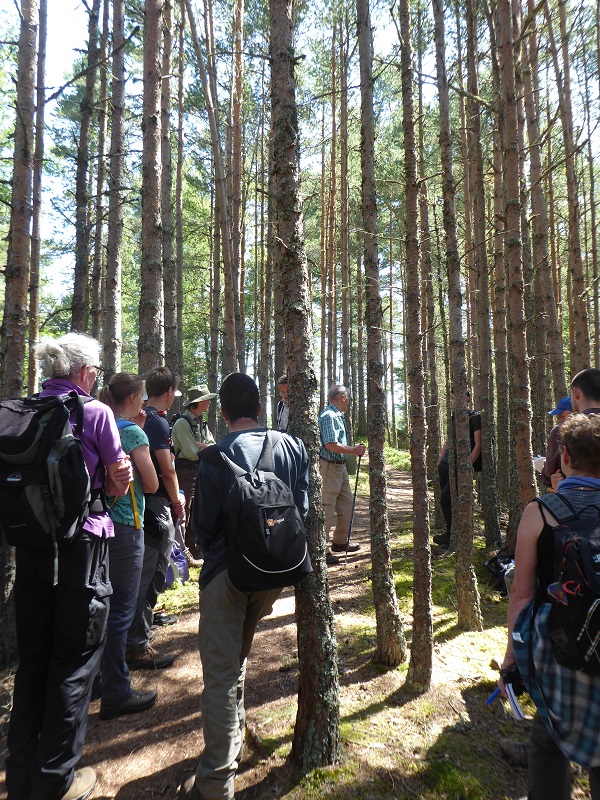
Besides replanting, another tenet of forest management, is that trees require to be thinned to flourish (see here for what happened at Loch an Eilein). Basil Dunlop explained that while such practices had taken place at Anagach in the past, if dense areas of natural regeneration – a consequence of pine seed falling on open ground – are left, the trees will gradually thin out over time and result in stands of strong long straight stemmed trees. It was an eye-opener to many of us that while our dominant image of native forest in Scotland is of gnarled twisted granny pines, woodland which appears more akin to a plantation may be just as natural.
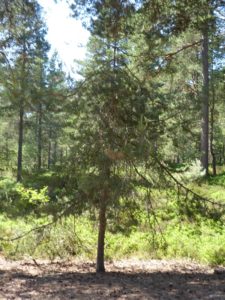
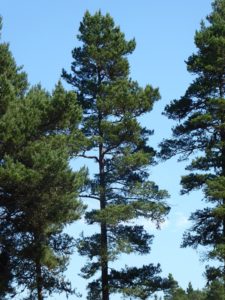
Basil showed us a number of different examples of the form pine trees takes from the pendulous (left) to those with short horizontal branches (right). While there is a debate about whether these different forms are a consequence of environmental or genetic factors, the short branched tree in the right photo had not filled the space around it suggesting there are significant genetic variations within the Caledonian Forest gene pool.
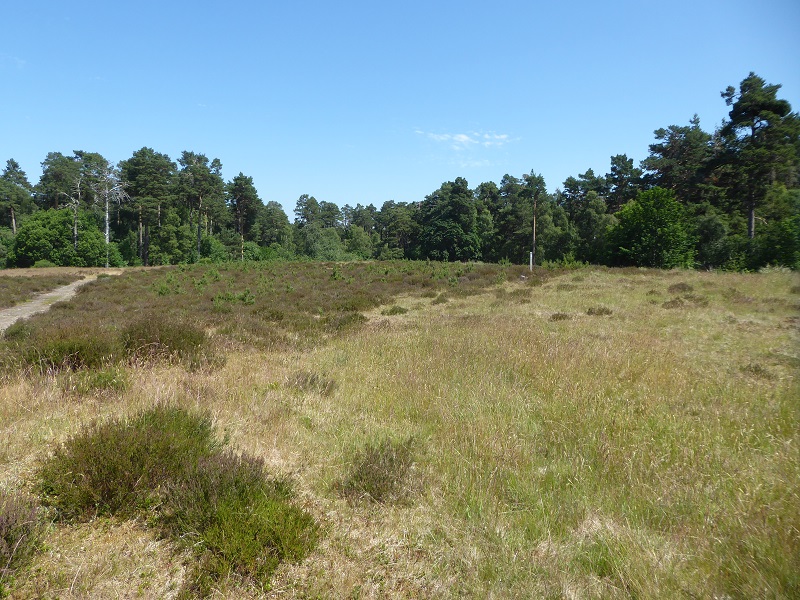
To me though the most fascinating example of nature at work was to be seen in an open area which was formerly the rubbish dump. When this had been shut, it had been restored with a thin layer of soil and grass planted and for a long time there was no regeneration of trees. But then heather started to grow and soon after that the trees appeared. Basil thought the likely explanation was that nutrients in the imported soil had gradually diminished over time, resulting in grasses being replaced by heather and now trees. Again, the lesson is that if you are patient and wait to see what nature does, amazing things start to happen.
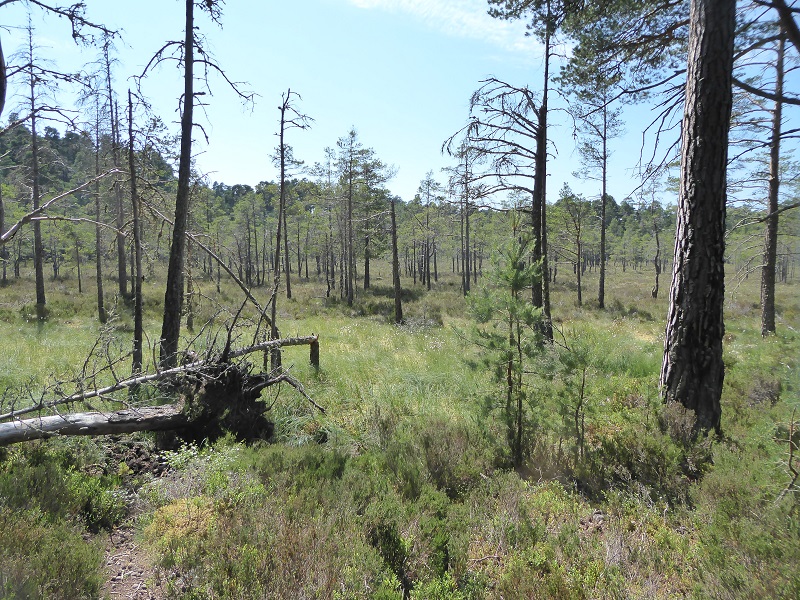
We also looked at an area bog woodland – where pines find it difficult to grow because of the wet ground conditions – hence the spindly trees. While the bog had mostly dried out in the hot weather we have been having, previous wet years had resulted in areas of trees dying off. Nature at work. Forests die as well as regenerate.
Lessons to be learned?
As someone interested in re-wilding, a term which many shun, I found what is going on at Anagach fascinating. We need to allow more places where natural processes are allowed to run their course. While Anagach Woods received some funding when the local community took over,they have not received any funding for a number of years. This has encouraged them to take a minimalist approach but creates its challenges.
The woods are very much for people and well used and Basil pointed out to us paths that have developed from the trails people have taken through the woods. While this is not generally seen as a problem – there can be an issue with people and dogs in the capercaillie breeding season and we had quite a debate about whether and how access needs to be managed at this time – some money for investment in paths and countryside ranger support would make a real difference. While the local school uses the wood the whole time, there is no-one now to help them to get the best out of the woods educationally (bug identification etc).
While the local community is very proud of the woods, its also very difficult to get people to volunteer – no doubt because many people now have to work long hours – and the work of the Board running the woods would be made much easier with some professional support. It was good therefore to hear that three staff from the Cairngorms National Park Authority, whose HQ is just half a mile away, are involved in the Board in their spare time. In a sense though that illustrates the lack of resources available. Too much conservation and community involvement is dependent on voluntary effort.
Part of the role of our National Parks should be setting out the resources that community initiatives like this require (another example is the Wildcat trail in Newtonmore which again has been starved of funds under austerity). While the CNPA has been very successful at drawing in outside funding to support conservation, it is unfortunately far from being enough.
I don’t think therefore that Anagach should be used as an example of how we can do conservation on the cheap. I do though believe it should be promoted widely as a brilliant example of re-wilding and how we need to have more places where we let nature takes its own course.
The Land Revival Study Tour
Reforesting Scotland intends to publish materials from the tour – everyone who participated was asked to write something about the visit and this post will be submitted as my contribution! I will try and publish links to that material – including views different to those expressed here – on parkswatchscotland when it appears. I hope this will help inform help debates on land-use in our National Parks.
Been in this forest a couple of times, it is an excellent forest and shows what can be done by inspired people. It would be great if many other landowners followed this example.